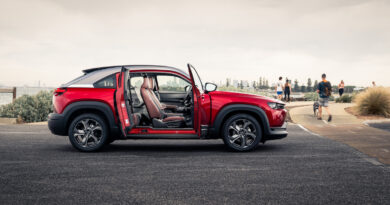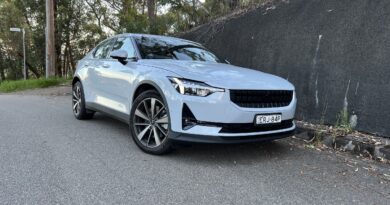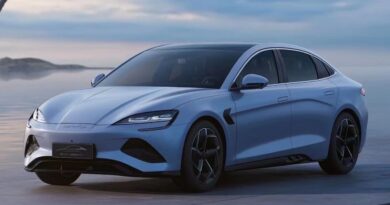Driven: Mercedes-EQ EQE 350+
The new EQE doesn’t exactly bring Mercedes-Benz EV excellence to the masses, but it’s going to sell in larger numbers than the larger and more luxurious EQS. And this, arguably, makes this new sedan a more significant addition to the brand’s electric line-up than the expensive limo very few will be able to afford.
Like the EQS, due soon in Australia, the EQE is built on the purpose-designed EVA2 platform. Earlier EVs from Mercedes, including the EQC and EQA currently sold here, are based on platforms shared with ICE-powered models.
Design and engineering compromises are inevitable when creating an EV this way, affecting everything from driving range to day-to-day practicality. Making the best possible EV means starting with a clean sheet of paper. Or, these days, more likely a blank computer screen.
So the difference between the EVA2-based EQS and EQE, and all of Mercedes’ earlier EVs is big. They’re roomier, quieter, smoother and more energy efficient.

While EQE won’t reach Australia until late 2022 at the earliest, first deliveries in Europe are only weeks away. Pricing there has been announced for the 350+, the first variant into production. And not only is the EQE 350+ much less expensive than the lowest priced EQS, it also undercuts the now three-year-old EQC.
The difference in Euros works out as the equivalent of almost $10,000. If the same margin applies in Australia, expect the EQE 350+, or close equivalent, to be around $120,000. Considering the car’s technology, quality, efficiency, performance and luxury – more on all of these later – the new Mercedes-EQ will present a tempting case to choose it instead of a fuel-burning Mercedes-Benz E-Class.

EVA2, Take 2…
Let’s get the basics out of the way first. Though the EQE and EQS are built on the same EVA2 platform, there are some important differences.
The big one is that the EQE has a shorter wheelbase, though at more than 3.1 metres it’s longer than the typical large ICE-powered sedan. The reduction restricts the maximum size battery pack that will fit between the EQE’s axles.
There’s room for only 10 modules, compared to 12 in the EQS, dropping usable capacity from 108kWh to 91kWh. Driving range drops accordingly. While the WLTP-rated range of the EQE 350+ is shorter than the anxiety-quelling 780km of the EQS 450+, it’s not at all bad… up to 654km.
Having a smaller battery also reduces the EQE’s maximum DC fast-charge rate. It’s 170kW, down from the 200kW of the EQS.

Though the EQE looks a lot like the aerodynamic record-setting EQS, the smaller car isn’t as slippery. Shorter overhangs and less overall length to work with limited what could be achieved with the EQE, one aerodynamic engineer explained. Still, the car’s 0.22 co-efficient of drag looks pretty good compared to anything except the 0.20Cd of the sleekest EQS variant.
There’s much more in common between EQE and EQS than not. They have identical electric motors, share many chassis components, and use the same safety, driver assist and infotainment tech.

Model range and make-up
First of the EQE line-up into production are the single-motor 350+ and the dual-motor and therefore all-wheel-drive AMG 43 4Matic. These will be joined by the 500 4Matic and AMG 53 4Matic+. Mercedes isn’t saying whether there also will be another single-motor variant to slide in beneath the 350+, but it’s very likely this will happen.
So far only the AMG 53 4Matic+ is definitely confirmed for Australia. According to our sources, there will be at least two other less costly EQE options. One will be a mid-range dual-motor model, the other a single-motor variant, possibly the 350+.
The range-topping 53 4Matic+ is sure to come standard with the all-glass Hyperscreen instrument panel, air-spring suspension and most advanced 10-degree rear-wheel-steer system. Whether these will be standard, optional or unavailable in lesser EQE models we’ll only know for sure closer to the Australian launch date.
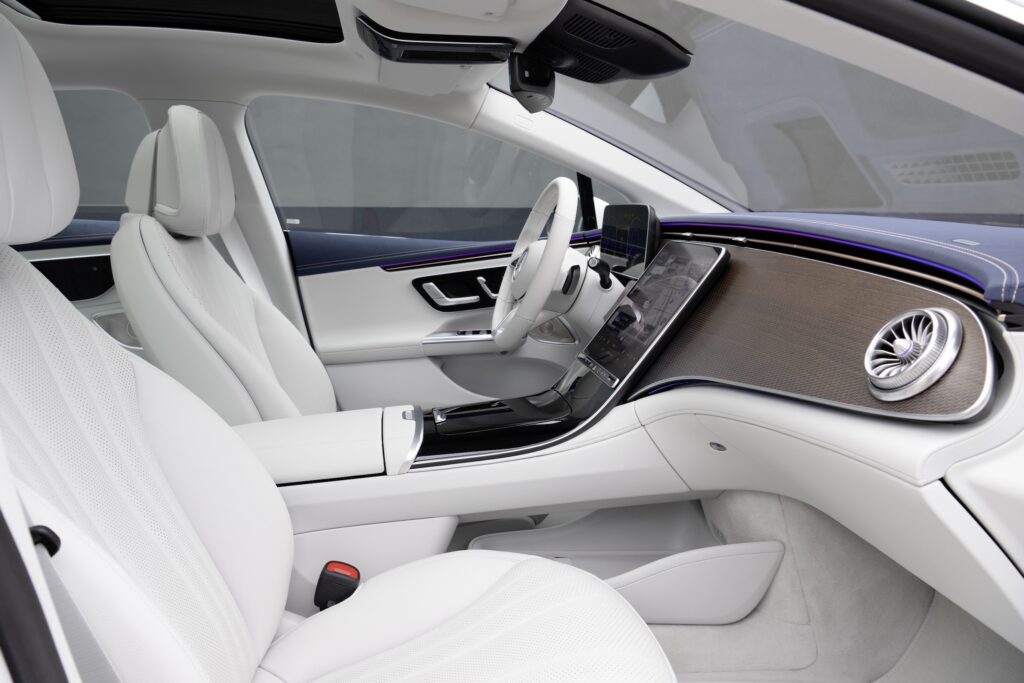

Interior design, space and tech
The interior layout of the EQE is very similar to the awesomely opulent and lavishly luxurious EQS. Mercedes brought both the 350+ with standard instrument panel and 500 4Matic with Hyperscreen to the international media presentation of the new EQE in Frankfurt.
While the Hyperscreen is stunning, the standard layout is also lovely to look at and easy to use. It features two displays; one multi-layout screen for the instruments and a central, portrait-oriented touchscreen that blends into the top surface of the centre console.


The front seats are excellent and the driving position, around 65mm higher than in an E-Class, is pretty much perfect. Visibility is good in every direction except rearwards. The EQE’s high tail and sloping roofline make the rear window a narrow slit.
That roofline also makes ducking a good idea when entering and leaving the rear seat, at least if you’re tall-ish. The seats are comfortable and there’s ample leg room. Headroom is better than adequate, but not great.
With its long wheelbase, the EQE’s cabin is both longer and wider than the E-Class, Mercedes says. Capacity of the cargo compart is a useful 430 litres. Unlike the liftback EQS the EQE instead has a conventional bootlid, making its luggage area a little more difficult to load and unload. The split rear-seat backrest folds forward to accommodate especially bulky items, just like normal.
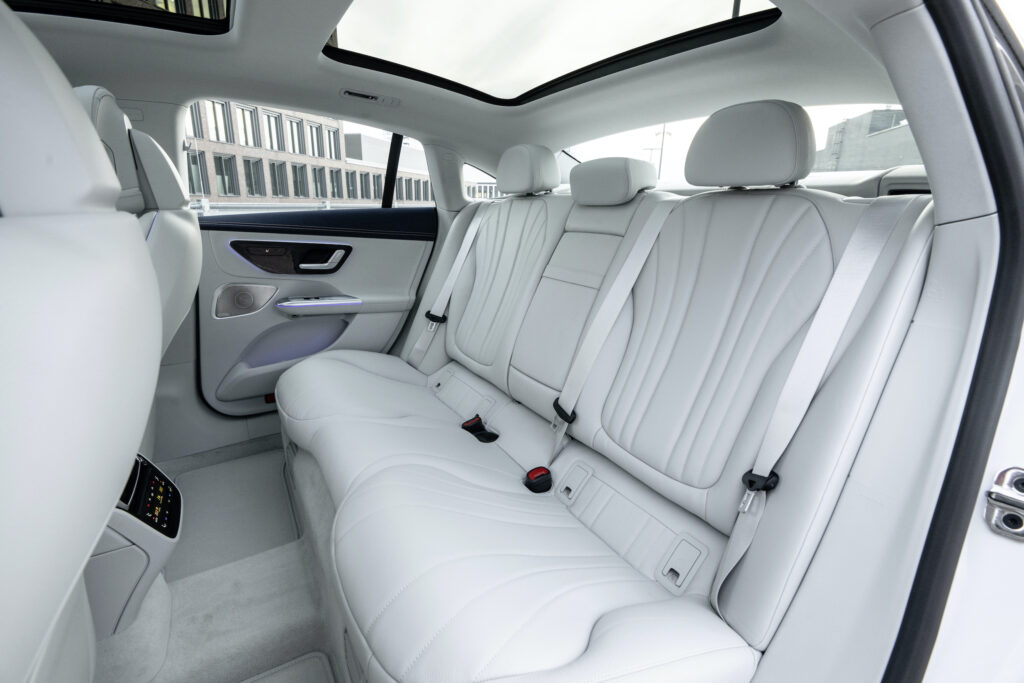

The infotainment and driver-assist tech is very impressive. The active safety systems mostly work very well. On the test drive the very advanced adaptive cruise control did misread speed-limit signs once or twice, causing unwanted slowdowns on busy multi-lane roads. These were the only glitches.
With its logical menu structures, speedy reactions and multiple control modes, the infotainment system is more user-friendly than most. Special mention here for Mercedes-Benz’s natural speech recognition software, which works surprisingly well.
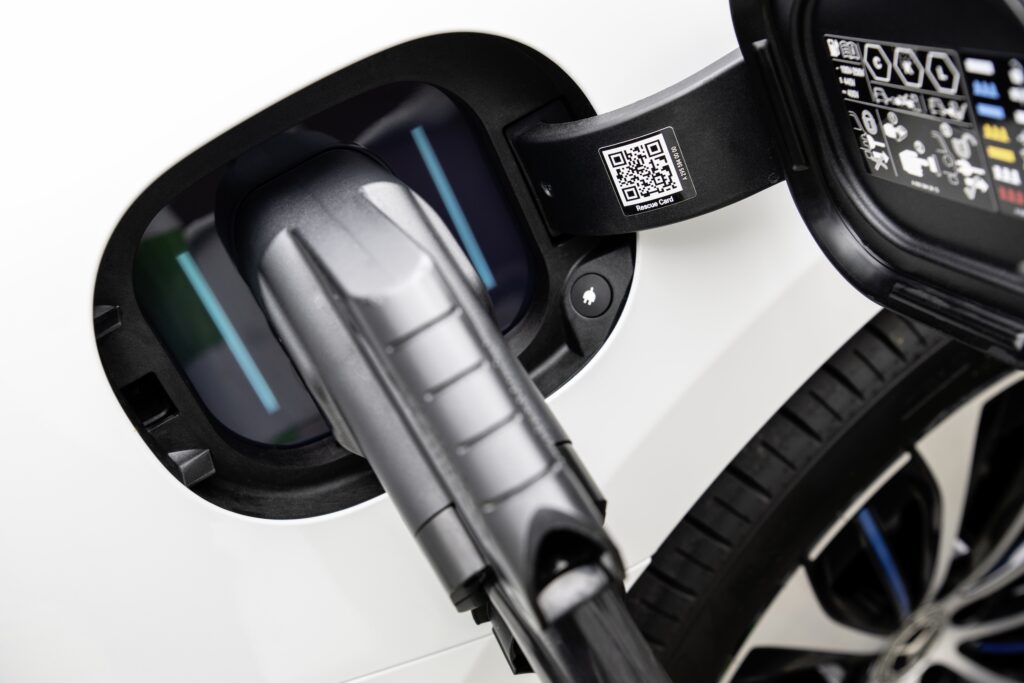

Range and charging
According to the standard WLTP test, the driving range of the 350+ is 567 to 654km and its energy consumption 15.9 to 18.7kWh/100km. The usually reliable experts at EV Database estimate the car’s average real-world range at 545km. Their worst case (cold weather highway driving) is 395km, their best case (mild weather city driving) is 775km.
What is clear is that its range means the EQE 350+ will need to be charged less frequently than the average EV. When that time comes, it’ll also be quicker than average to refill.
An 11kW on-board AC charger is standard, and a 22kW unit is optional in Europe. The standard charger will deliver a 0-100 percent recharge in around 8.5 hours, while the more powerful option cuts that time almost in half.
With the 400-volt battery pack able to handle DC fast charging up to 170kW, the 350+ can add up to 250km or range in only 15 minutes. A 10 to 80 percent recharge will take 32 minutes, according to Mercedes. The CCS Combo charging port is behind a flap on the right-hand rear of the car.
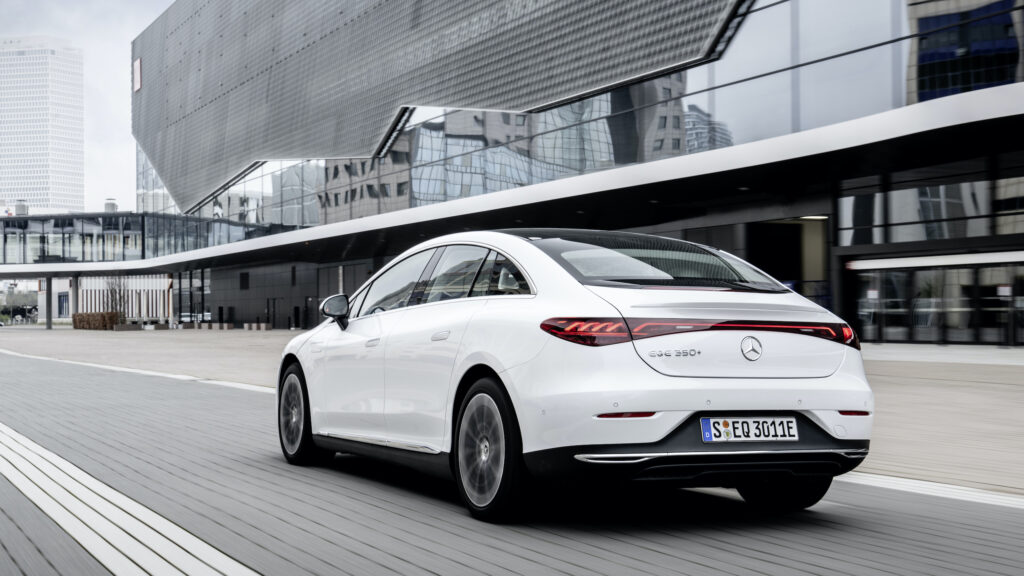

Behind the wheel
Serene silence and smoothness are the first impressions driving the EQE 350+ out of Frankfurt towards the nearby hills. Big sister EQS is perhaps the quietest and most refined EV in the world right now, and the EQE seems to be its equal.
All the cars Mercedes brought to the Frankfurt presentation were equipped with air-spring suspension. Germany’s financial capital has plenty of tram tracks and there also happened to be plenty of roadworks on the route, but the car made it seem like they almost weren’t there.
So the ride comfort on the optional suspension is superb. What it’s like on standard steel springs, we’ll have to wait and see.
Though the steering is light and none too feely, the Mercedes-EQ handles very well. The big underfloor battery pack means it has a low centre of gravity and near perfect weight distribution.
But with a kerb weight of over 2.3 tonnes, the 350+ is a hefty car. Despite the weight, it’s satisfyingly quick. Mercedes claims a 0-100km/h time of 6.4 seconds, and the car feels eager please and responsive to the accelerator pedal.
Maximum outputs of the single motor in the rear axle are 215kW and 565Nm. It features the same six-phase stator windings as the rear motor in the EQS. Most EVs use three-phase motors, but Mercedes claims its six-phase design boosts power without increasing size.
There was also a chance to sample a dual-motor 500 4Matic with totals of 300kW and 858Nm on tap, which also happened to be equipped with the Hyperscreen instrument panel.
Torrential rain was falling part of the time, highlighting the 500 4Matic’s superb straight-line traction. But the EV’s weight overtaxed the tyres when attempting to corner and accelerate at the same time, leading to sliding wide of the driver-desired line.
The more powerful AMG variants, especially the 53 4Matic+ destined for Australia, are certain to be absolutely ballistic… at least on dry roads.



The wrap…
The EQE is an EV that emphatically proves the superiority of a purpose-designed platform. It’s refined, comfortable, efficient, quick, great to drive, a pleasure to ride in and mostly delightful to use.
Some may view it as a reasonable substitute for the discontinued Tesla Model S, but the Mercedes-EQ is actually much better than that.
It’s simply EV excellence made more affordable. If Mercedes can keep this up with the less costly EVs in the pipeline, they’re on track for success in the electric age.


Mercedes-EQ EQE 350+ specifications
Price: $130,000 (estimated)
Basics: EV, 5 seats, 4 door sedan, RWD
Range: 567 to 654km (WLTP)
Battery capacity: 91kWh
Battery warranty: 10 years/250,000km (guarantee of 70 percent of original battery capacity)
Energy consumption: 15.9 to 18.7kWh/100km (WLTP)
Motors: 1 rear, 215kW/565Nm
AC charging: 11kW, Type 2
DC charging: 170kW, CCS Combo
0-100km/h: 6.4 seconds (claimed)

